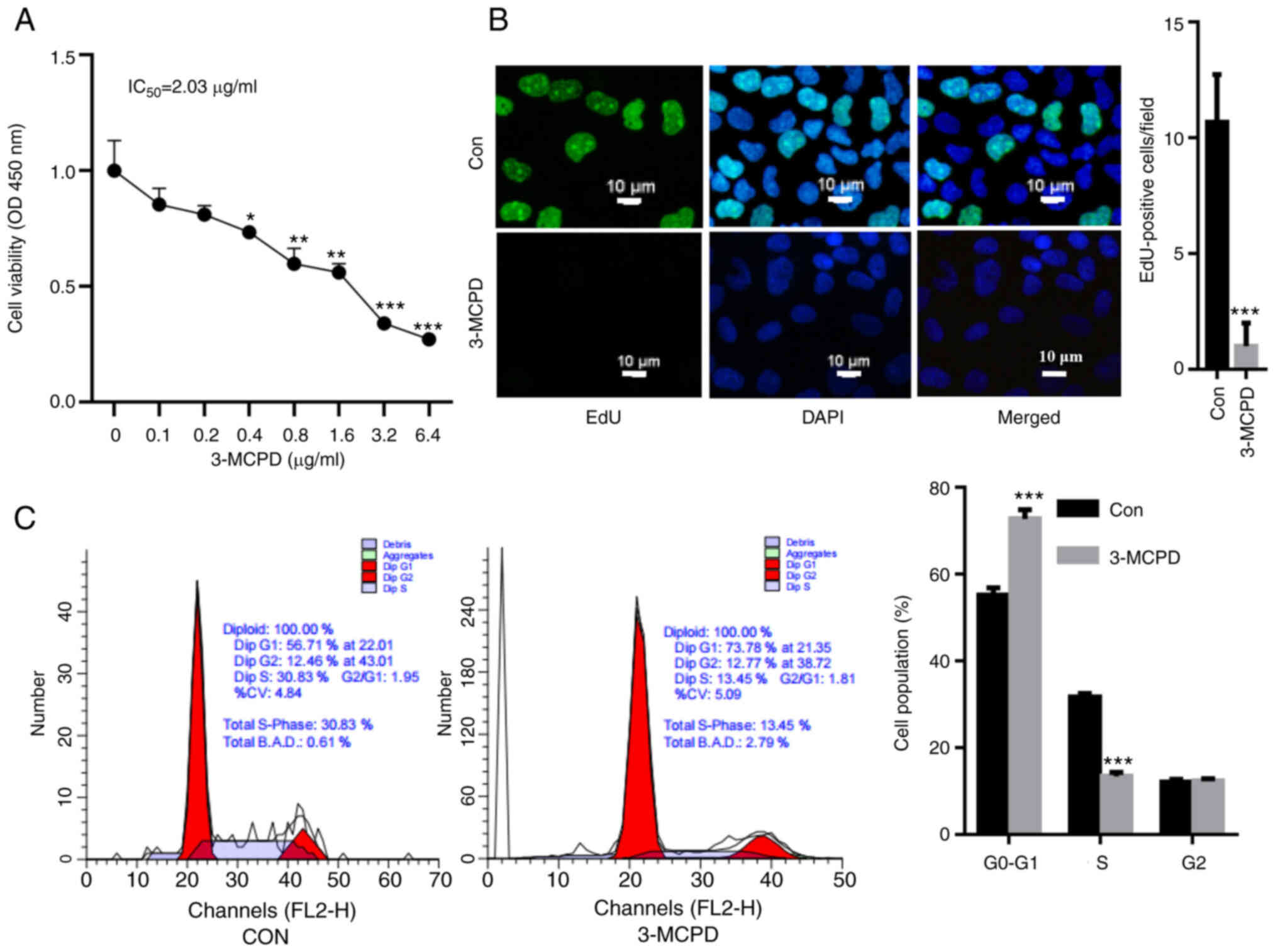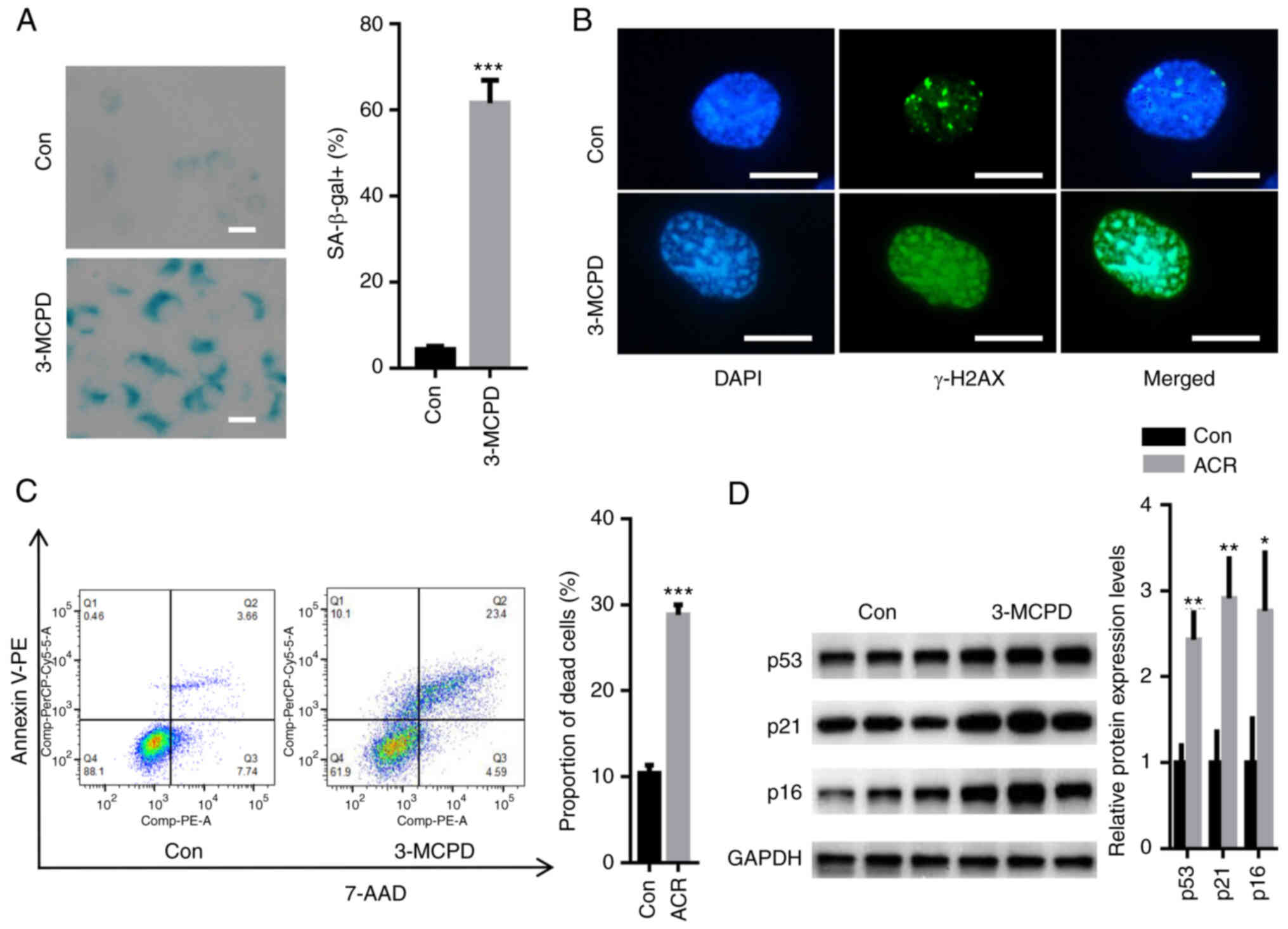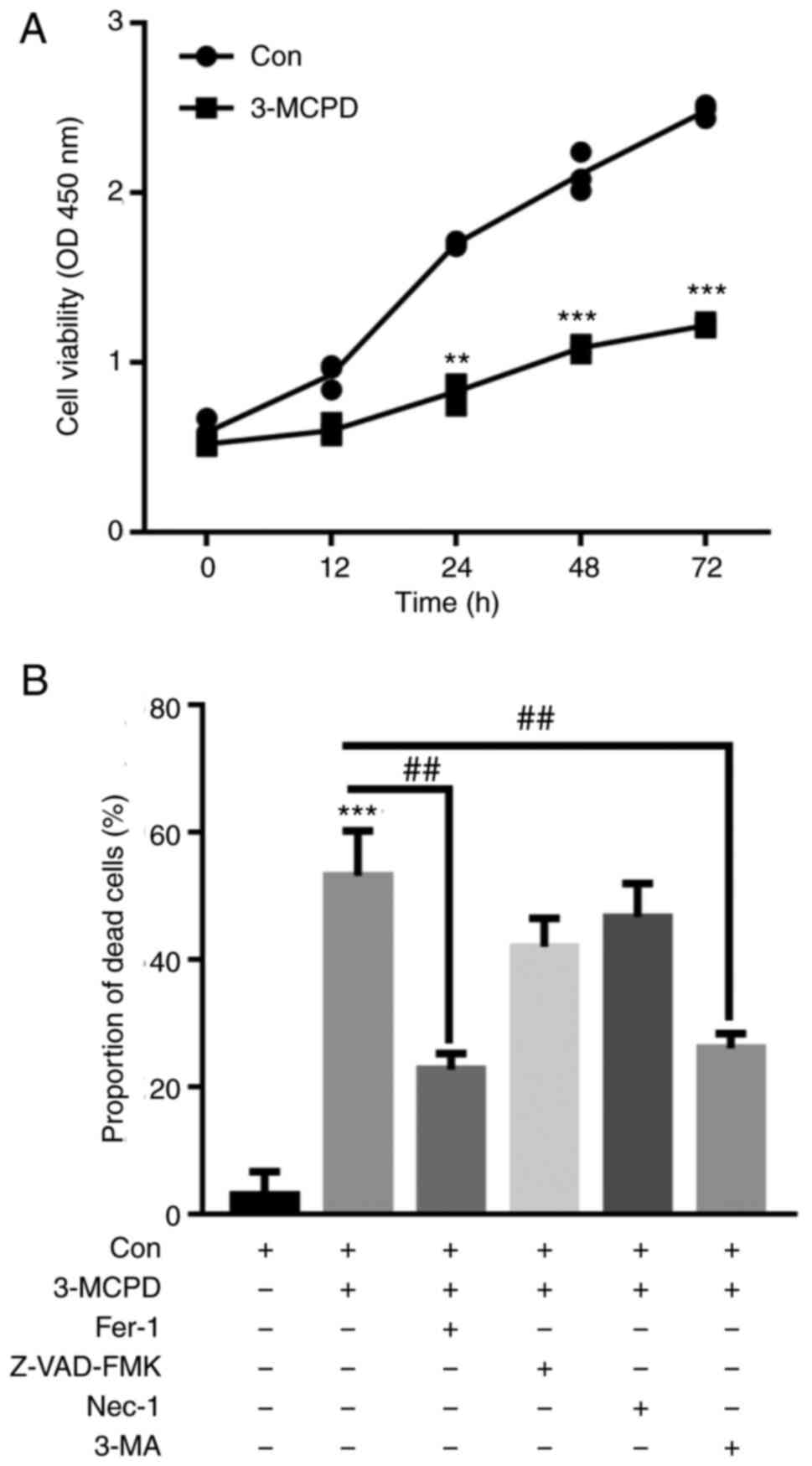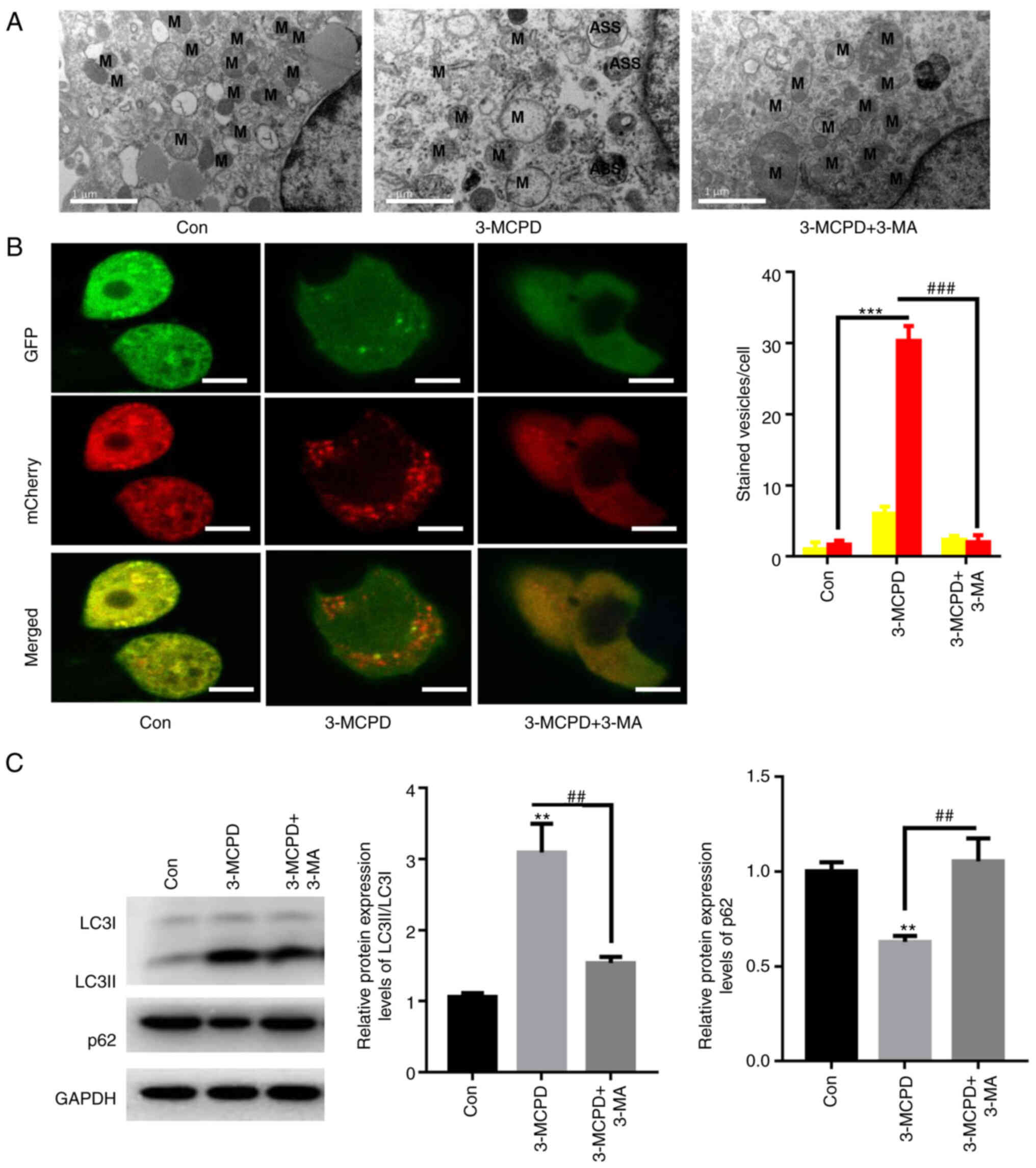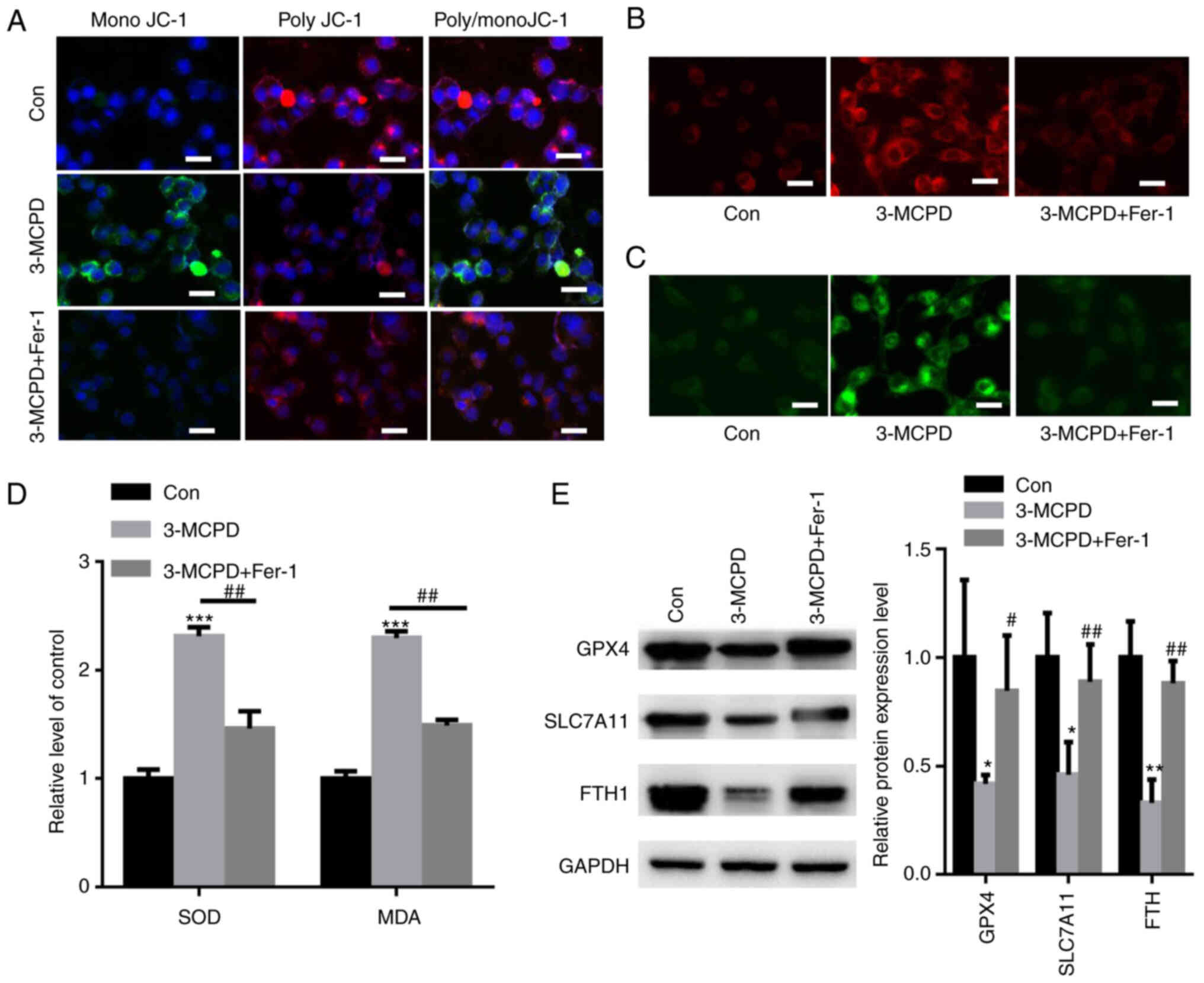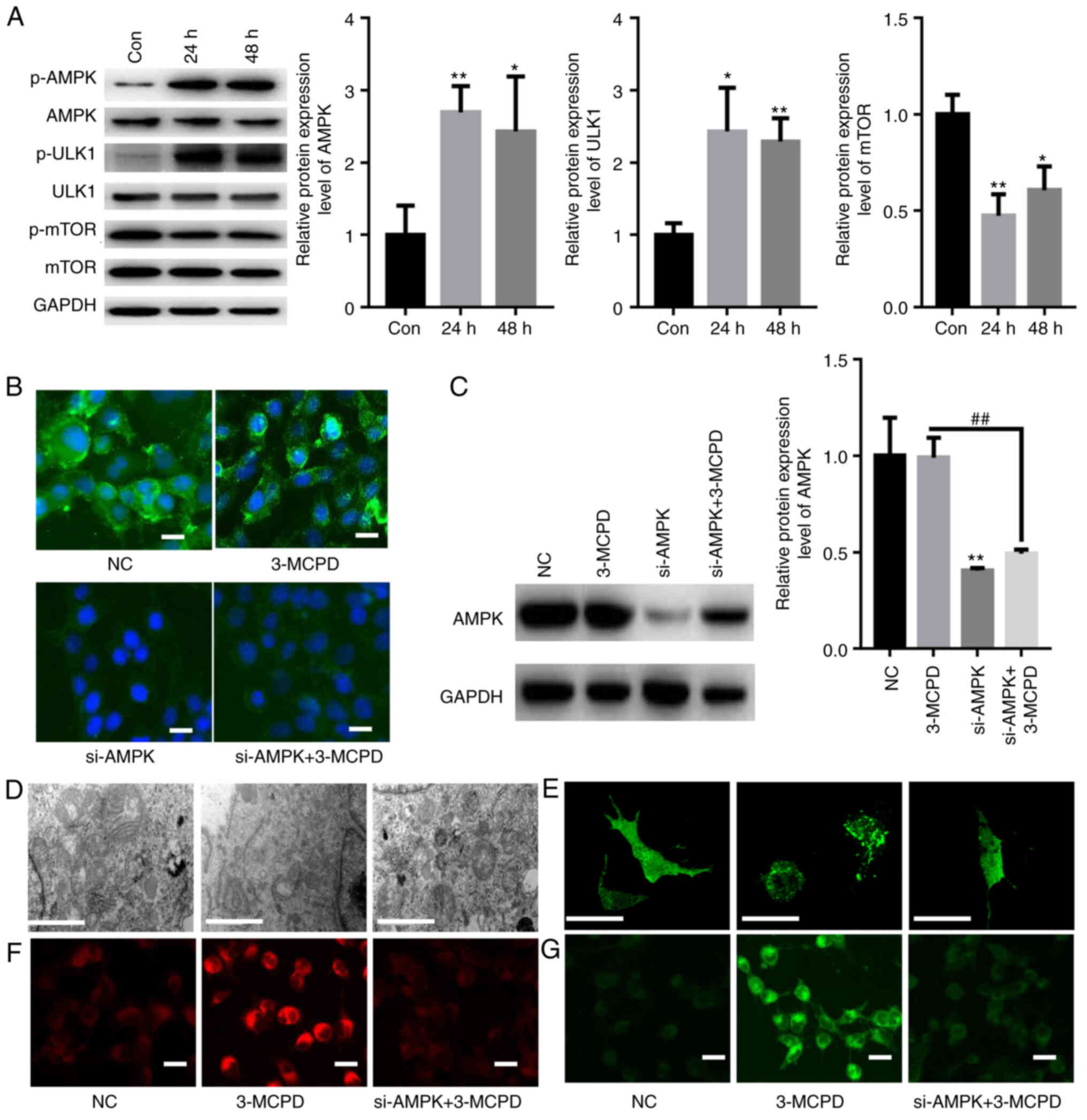|
1
|
Mi L, Zhang Y, Xu Y, Zheng X, Zhang X,
Wang Z, Xue M and Jin X: HMGB1/RAGE pro-inflammatory axis promotes
vascular endothelial cell apoptosis in limb ischemia/reperfusion
injury. Biomed Pharmacother. 116:1090052019. View Article : Google Scholar : PubMed/NCBI
|
|
2
|
Krüger-Genge A, Blocki A, Franke RP and
Jung F: Vascular endothelial cell biology: An update. Int J Mol
Sci. 20:44112019. View Article : Google Scholar : PubMed/NCBI
|
|
3
|
Masoud AG, Lin J, Azad AK, Farhan MA,
Fischer C, Zhu LF, Zhang H, Sis B, Kassiri Z, Moore RB, et al:
Apelin directs endothelial cell differentiation and vascular repair
following immune-mediated injury. J Clin Invest. 130:94–107. 2020.
View Article : Google Scholar : PubMed/NCBI
|
|
4
|
Zhu Z, Li J and Zhang X: Salidroside
protects against ox-LDL-induced endothelial injury by enhancing
autophagy mediated by SIRT1-FoxO1 pathway. BMC Complement Altern
Med. 19:1112019. View Article : Google Scholar : PubMed/NCBI
|
|
5
|
Qin X, Zhang J, Wang B, Xu G, Yang X, Zou
Z and Yu C: Ferritinophagy is involved in the zinc oxide
nanoparticles-induced ferroptosis of vascular endothelial cells.
Autophagy. 17:4266–4285. 2021. View Article : Google Scholar : PubMed/NCBI
|
|
6
|
Sachdev U and Lotze MT: Perpetual change:
Autophagy, the endothelium, and response to vascular injury. J
Leukoc Biol. 102:221–235. 2017. View Article : Google Scholar : PubMed/NCBI
|
|
7
|
Grootaert MOJ, Moulis M, Roth L, Martinet
W, Vindis C, Bennett MR and De Meyer GRY: Vascular smooth muscle
cell death, autophagy and senescence in atherosclerosis. Cardiovasc
Res. 114:622–634. 2018. View Article : Google Scholar : PubMed/NCBI
|
|
8
|
Chen X, Yan XR, Liu J and Zhang LP: Chaiqi
decoction ameliorates vascular endothelial injury in metabolic
syndrome by upregulating autophagy. Am J Transl Res. 12:4902–4922.
2020.PubMed/NCBI
|
|
9
|
Fîlfan M, Sandu RE, Zăvăleanu AD, GreşiŢă
A, Glăvan DG, Olaru DG and Popa-Wagner A: Autophagy in aging and
disease. Rom J Morphol Embryol. 58:27–31. 2017.PubMed/NCBI
|
|
10
|
Gupta R, Ambasta RK and Pravir K:
Autophagy and apoptosis cascade: Which is more prominent in
neuronal death? Cell Mol Life Sci. 78:8001–8047. 2021. View Article : Google Scholar : PubMed/NCBI
|
|
11
|
Chen GQ, Benthani FA, Wu J, Liang D, Bian
ZX and Jiang X: Artemisinin compounds sensitize cancer cells to
ferroptosis by regulating iron homeostasis. Cell Death Differ.
27:242–254. 2020. View Article : Google Scholar : PubMed/NCBI
|
|
12
|
Gao M, Monian P, Pan Q, Zhang W, Xiang J
and Jiang X: Ferroptosis is an autophagic cell death process. Cell
Res. 26:1021–1032. 2016. View Article : Google Scholar : PubMed/NCBI
|
|
13
|
Huang F, Yang R, Xiao Z, Xie Y, Lin X, Zhu
P, Zhou P, Lu J and Zheng S: Targeting ferroptosis to treat
cardiovascular diseases: A new continent to be explored. Front Cell
Dev Biol. 9:7379712021. View Article : Google Scholar : PubMed/NCBI
|
|
14
|
Li Y, Feng D, Wang Z, Zhao Y, Sun R, Tian
D, Liu D, Zhang F, Ning S, Yao J and Tian X: Ischemia-induced ACSL4
activation contributes to ferroptosis-mediated tissue injury in
intestinal ischemia/reperfusion. Cell Death Differ. 26:2284–2299.
2019. View Article : Google Scholar : PubMed/NCBI
|
|
15
|
Zhao WK, Zhou Y, Xu TT and Wu Q:
Ferroptosis: Opportunities and challenges in myocardial
ischemia-reperfusion injury. Oxid Med Cell Longev.
2021:99296872021. View Article : Google Scholar : PubMed/NCBI
|
|
16
|
Jędrkiewicz R, Kupska M, Głowacz A,
Gromadzka J and Namieśnik J: 3-MCPD: A worldwide problem of food
chemistry. Crit Rev Food Sci Nutr. 56:2268–2277. 2016. View Article : Google Scholar : PubMed/NCBI
|
|
17
|
Bergau N, Zhao Z, Abraham K and Monien BH:
Metabolites of 2- and 3-monochloropropanediol (2- and 3-MCPD) in
humans: urinary excretion of 2-chlorohydracrylic acid and
3-chlorolactic acid after controlled exposure to a single high dose
of fatty acid esters of 2- and 3-MCPD. Mol Nutr Food Res.
65:e20007362021. View Article : Google Scholar : PubMed/NCBI
|
|
18
|
Cui X, Zhang L, Zhou P, Liu Z, Fan S, Yang
D, Li J and Liu Q: Dietary exposure of general Chinese population
to fatty acid esters of 3-monochloropropane-1, 2-diol (3-MCPD) from
edible oils and oil-containing foods. Food Addit Contam Part A Chem
Anal Control Expo Risk Assess. 38:60–69. 2021. View Article : Google Scholar : PubMed/NCBI
|
|
19
|
Abraham K, Appel KE, Berger-Preiss E, Apel
E, Gerling S, Mielke H, Creutzenberg O and Lampen A: Relative oral
bioavailability of 3-MCPD from 3-MCPD fatty acid esters in rats.
Arch Toxicol. 87:649–659. 2013. View Article : Google Scholar : PubMed/NCBI
|
|
20
|
Bakhiya N, Abraham K, Gürtler R, Appel KE
and Lampen A: Toxicological assessment of 3-chloropropane-1,2-diol
and glycidol fatty acid esters in food. Mol Nutr Food Res.
55:509–521. 2011. View Article : Google Scholar : PubMed/NCBI
|
|
21
|
Sawada S, Oberemm A, Buhrke T, Meckert C,
Rozycki C, Braeuning A and Lampen A: Proteomic analysis of 3-MCPD
and 3-MCPD dipalmitate toxicity in rat testis. Food Chem Toxicol.
83:84–92. 2015. View Article : Google Scholar : PubMed/NCBI
|
|
22
|
Arris FA, Thai VTS, Manan WN and Sajab MS:
A revisit to the formation and mitigation of
3-chloropropane-1,2-diol in palm oil production. Foods. 9:17692020.
View Article : Google Scholar : PubMed/NCBI
|
|
23
|
Gao M, Yi J, Zhu J, Minikes AM, Monian P,
Thompson CB and Jiang X: Role of mitochondria in ferroptosis. Mol
Cell. 73:354–363.e3. 2019. View Article : Google Scholar : PubMed/NCBI
|
|
24
|
Guo H, Ouyang Y, Yin H, Cui H, Deng H, Liu
H, Jian Z, Fang J, Zuo Z, Wang X, et al: Induction of autophagy via
the ROS-dependent AMPK-mTOR pathway protects copper-induced
spermatogenesis disorder. Redox Biol. 49:1022272022. View Article : Google Scholar : PubMed/NCBI
|
|
25
|
Bao L, Zhao C, Feng L, Zhao Y, Duan S, Qiu
M, Wu K, Zhang N, Hu X and Fu Y: Ferritinophagy is involved in
Bisphenol A-induced ferroptosis of renal tubular epithelial cells
through the activation of the AMPK-mTOR-ULK1 pathway. Food Chem
Toxicol. 163:1129092022. View Article : Google Scholar : PubMed/NCBI
|
|
26
|
Tiong SH, Nair A, Abd Wahid SA, Saparin N,
Ab Karim NA, Ahmad Sabri MP, Md Zain MZ, The HF, Adni AS, Ping Tan
C, et al: Palm oil supply chain factors impacting chlorinated
precursors of 3-MCPD esters. Food Addit Contam Part A Chem Anal
Control Expo Risk Assess. 38:2012–2025. 2021. View Article : Google Scholar : PubMed/NCBI
|
|
27
|
Denton D and Kumar S: Autophagy-dependent
cell death. Cell Death Differ. 26:605–616. 2019. View Article : Google Scholar : PubMed/NCBI
|
|
28
|
Liu MR, Zhu WT and Pei DS: System
Xc−: A key regulatory target of ferroptosis in cancer.
Invest New Drugs. 39:1123–1131. 2021. View Article : Google Scholar : PubMed/NCBI
|
|
29
|
Parker JL, Deme JC, Kolokouris D, Kuteyi
G, Biggin PC, Lea SM and Newstead S: Molecular basis for redox
control by the human cystine/glutamate antiporter system xc. Nat
Commun. 12:71472021. View Article : Google Scholar : PubMed/NCBI
|
|
30
|
Yu Y, Jiang L, Wang H, Shen Z, Cheng Q,
Zhang P, Wang J, Wu Q, Fang X, Duan L, et al: Hepatic transferrin
plays a role in systemic iron homeostasis and liver ferroptosis.
Blood. 136:726–739. 2020. View Article : Google Scholar : PubMed/NCBI
|
|
31
|
Hassannia B, Vandenabeele P and Vanden
Berghe T: Targeting ferroptosis to iron out cancer. Cancer Cell.
35:830–849. 2019. View Article : Google Scholar : PubMed/NCBI
|
|
32
|
Kim J, Kundu M, Viollet B and Guan KL:
AMPK and mTOR regulate autophagy through direct phosphorylation of
Ulk1. Nat Cell Biol. 13:132–141. 2011. View Article : Google Scholar : PubMed/NCBI
|
|
33
|
Li MY, Zhu XL, Zhao BX, Shi L, Wang W, Hu
W, Qin SL, Chen BH, Zhou PH, Qiu B, et al: Adrenomedullin
alleviates the pyroptosis of Leydig cells by promoting autophagy
via the ROS-AMPK-mTOR axis. Cell Death Dis. 10:4892019. View Article : Google Scholar : PubMed/NCBI
|
|
34
|
Lee H, Zandkarimi F, Zhang Y, Meena JK,
Kim J, Zhuang L, Tyagi S, Ma L, Westbrook TF, Steinberg GR, et al:
Energy-stress-mediated AMPK activation inhibits ferroptosis. Nat
Cell Biol. 22:225–234. 2020. View Article : Google Scholar : PubMed/NCBI
|
|
35
|
Song X, Zhu S, Chen P, Hou W, Wen Q, Liu
J, Xie Y, Liu J, Klionsky DJ, Kroemer G, et al: AMPK-mediated BECN1
phosphorylation promotes ferroptosis by directly blocking system
Xc− activity. Curr Biol. 28:2388–2399.e5.
2018. View Article : Google Scholar : PubMed/NCBI
|
|
36
|
Zhang L, Liu W, Liu F, Wang Q, Song M, Yu
Q, Tang K, Teng T, Wu D, Wang X, et al: IMCA induces ferroptosis
mediated by SLC7A11 through the AMPK/mTOR pathway in colorectal
cancer. Oxid Med Cell Longev. 2020:16756132020. View Article : Google Scholar : PubMed/NCBI
|
|
37
|
Ji J, Zhu P, Sun C, Sun J, An L, Zhang Y
and Sun X: Pathway of 3-MCPD-induced apoptosis in human embryonic
kidney cells. J Toxicol Sci. 42:43–52. 2017. View Article : Google Scholar : PubMed/NCBI
|
|
38
|
Sevim Ç, Özkaraca M, Kara M, Ulaş N,
Mendil AS, Margina D and Tsatsakis A: Apoptosis is induced by
sub-acute exposure to 3-MCPD and glycidol on Wistar Albino rat
brain cells. Environ Toxicol Pharmacol. 87:1037352021. View Article : Google Scholar : PubMed/NCBI
|
|
39
|
Sawada S, Oberemm A, Buhrke T, Merschenz
J, Braeuning A and Lampen A: Proteomic analysis of 3-MCPD and
3-MCPD dipalmitate-induced toxicity in rat kidney. Arch Toxicol.
90:1437–1448. 2016. View Article : Google Scholar : PubMed/NCBI
|















